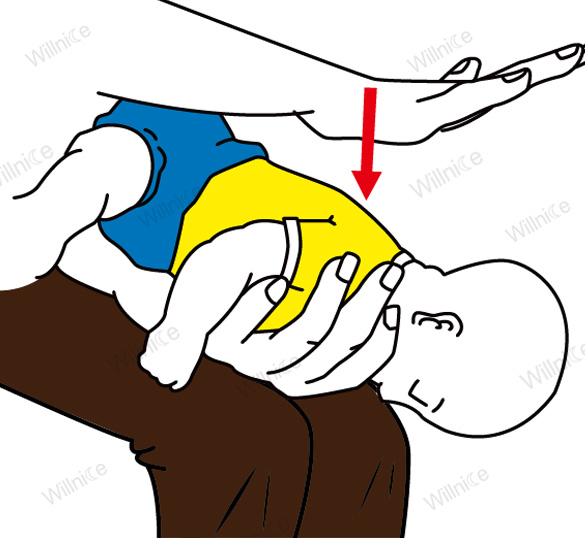
Choking is a dangerous emergency that may result in the worst-case scenario which is loss of life if the situation is not handled quickly. The purpose of this blog post is to explain further the causes of choking as well as the possible prevention measures that may be adopted to avoid the occurrence of lethal circumstances that may arise. Another main purpose of the article is to address the types of activities that can induce choking which include the use of improper feeding, having difficulties with swallowing, and the impact of extraneous materials. As well as examine alternative measures that include first aid and changes of lifestyle that individuals and societies can take to minimize choking cases. After this post, the reader will be able to look for solutions to choking emergencies by understanding how they emerge and how they can be prevented in the first place.
What are the main causes of choking deaths?
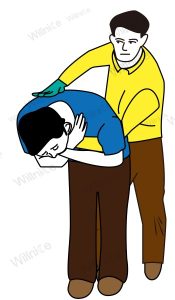
Choking deaths result from a blocked airway that restricts oxygen supply to the lungs and brain. Every one of us has naturally witnessed people eating too fast for no reason but to finish the meal, and chewing is often ignored too. Other causes include swallowing disorders like dysphagia that interfere with the normal swallowing mechanism. In kids, choking is usually caused by swallowing small toys or other objects that they shouldn’t be putting into the mouth in the first place. This is not it, consuming alcohol and drugs can also suppress proper gag reflex action which can again create choking situations. Hence knowing these causes becomes important as they can help in efficient prevention strategies.
How does a choking hazard lead to a choking death?
When a foreign body which is a choking hazard gets lodged in the airway, fresh air containing oxygen does not and cannot reach the lungs which means that the body's vital organs including the brain cannot be supplied with oxygen. A blockage like this, if not dealt with, can render a person unconscious in a matter of minutes. Deprivation of oxygen for a long period without timely correction can cause severe poisoning of the brain tissues which may even lead to death. Some of the important factors that explain this progression are the size and location of the lodged blocking object, the person's body functions, and the time of rescue measures. Accidents of this nature can be promptly managed via effective first-hand treatment with the Heimlich maneuver, performing this sequentially with a call for help.
Which age group is most at risk of choking?
The choking risk increases for young children aged 3 or less, and even more for under 1 year. The reason is that they have no good chewing skills yet, and they tend to put objects in their mouth. People above age 65 are also at risk because of age changes that affect the swallow reflex and the teeth needed for proper chewing; the latter often becomes quite a task by itself. Both these age categories do reserve concerns for more caution and preventive measures to effectively lower the instances of choking.
What role does food play in choking deaths?
Food is considered a major cause of choking deaths amongst vulnerable age groups like young children or the aged. Some properties of food increase the likelihood of choking:
Nature of food: Foods that are round or cylindrical like nuts and grapes tend to get stuck in the windpipe.
Nature of food: Due to lack of chewing, sticky or chewy foods such as marshmallows, donut stress, etc tend to become lodged in the throat area.
Nature of food: Candies or raw vegetables besides hard mastication are examples of solid and hard foods that can never be broken down into smaller pieces thereby increasing obstruction incidents.
To avoid such situations, deliberate measures must be undertaken such as educating caregivers on the correct methods for food preparation while avoiding small, round, and sticky foods such as cutting them into smaller pieces that are age-appropriate.
How can you prevent choking effectively?
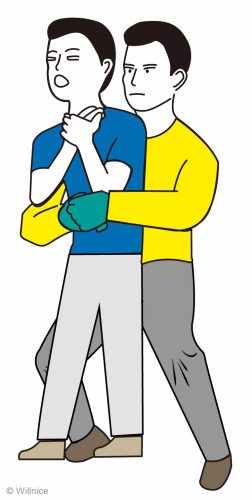
To minimize the risk of choking, advocates should target them across developmental stages. Employ age-appropriate preventive measures such as supervision during meals and playtime for preschoolers and removing all small objects from the vicinity of such activities. Food should be cut into smaller pieces where necessary and walking while eating should be avoided. Educate caregivers and other parents about the importance of making children sit at the table during meals and having the environment calm. For the elderly, ensure that the food is cut up into smaller pieces and can be easily chewed, and use specially designed cutlery when necessary. Teach individuals and families about the symptoms of choking and emergency management strategies such as the Heimlich maneuver. But most importantly choking cases can be avoided through awareness and prevention strategies.
What are some methods to help prevent choking in children and adults?
Choking prevention requires common sense and the watchful eyes of a caregiver. Children should always be watched while they eat or play. They should be fed softer food which is easier to chew. Grapes, nuts, and hard candies should only be given to children after modification to prevent choking hazards. Elderly people may have some dental or swallowing difficulties and it is advisable to feed them less rough food and easy to chew ones. In both adults and children, it is helpful to know first aid for choking, including the Heimlich maneuver which is a universal skill. Detailed counseling of the parents and the caregivers as to which foods and objects are harmful and how to respond to these emergencies is an effective way of preventing swallowing. Thus, all these barriers can be utilized to reduce the number of choking incidents for all groups of age.
How do abdominal thrust techniques work in emergencies?
During the application of abdominal thrust techniques also known as Heimlich techniques, I position myself behind the person who is experiencing choking and clasp my hands around their waist. One hand is used to form a fist placing the thumb side just above the person's belly button and in the region that is low on the rib cage. After using one hand to grip my fist on the other hand, I exert strength in the frontal as well as the transverse planes, and these two planes are the lungs that help in exhaling the air. Hopefully, this means the air that is holding the obstruction that is present in the airway gets out. One important rule about abdominal thrusts is that these should only be done to the person the entire chest and abdominal wall are thrusts. Moved suddenly to generate intrathoracic pressure. The first thrust helps to expel the foreign material out of the lungs which is intrathoracic pressure mass. Thrusting is performed strongly. In adult or non-responsive patients, it is important to remain focused. n performing chest thrusts as well as back blows for pregnant individuals. However, in any case, taking a deep breath and remaining calm is the first thing that is required to obstruct the body in a tight grab. This makes it easy to remove the object and ensures safety in case such situations arise again in the future.
What safety tips can prevent choking in elderly people?
Several measures can be adopted to reduce choking risk in the elderly. One step is to ensure the provision of food that is chopped into small, appropriate sizes which in turn should be tender and well-cooked. Sticky and dry food which readily suggests the possibility of obstruction of the windpipe should also be avoided. One can also avoid incidents of eating too fast, by encouraging a person to chew properly and take food slowly. Maintaining regular reviews of one’s oral hygiene so that any dental degeneration of eating structures is always looked after is important. On an everyday level, there is also a need to avoid distractions such as watching TV which can help one concentrate on eating without putting in danger. Knowledge of appropriate emergency procedures, including the Heimlich maneuver or back blows, is useful if a choking accident occurs, and caregivers and family members should understand how to use these techniques. Periodic revision and modification of such measures as per the requirements of the individual concerning his physical status can largely reduce the chances of choking.
How significant is the problem of choking in children?
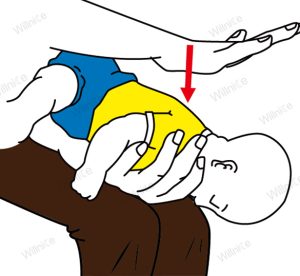
As children are one of the main unintentional injury and death risk groups, those aged five and younger especially face the most concerns as regards choking. Due to their curious nature, children will explore their surroundings by putting objects in their mouths which increases their risk of choking on small items such as toys, coins, or even food. Foods that pose a greater risk of choking hazards include nuts, grapes, popcorn, and hot dogs due to their shape and size. This is made worse when children do not possess adequate abilities to chew and swallow. Caretakers should exercise caution through recommended habits such as monitoring meal times, slicing food items into smaller portions, and ensuring age-appropriate toys do not contain little removable parts. Having the requisite first aid techniques to not only prevent but also reduce the risk of choking emergencies is important.
What items pose a choking hazard to children younger than five?
Due to their instincts of learning through mouths and developing skills children under the age of five are more likely to experience the risk of choking. Small toys or parts, balloons, batteries, household objects, buttons, or even coins are some items that can suffocate them. Among the food items whole grapes, butcher's nuts, popcorn, raw carrots, and sausages are very dangerous as they are large, or round or have a stubby appearance. All toys used should be age-appropriate for the child or in the child’s age metric besides these parents should also keep a close eye while children are eating or playing to avoid such problems.
Why are small objects and balloons dangerous?
Balloons and small items pose a threat to young children since there is a chance that they will end up being stuck in the throat, causing choking. As a parent, I know that due to children’s instincts, they tend to put foreign objects in their mouths which heightens this risk. Due to their shape and size, small toys, parts, and balloons, especially deflated ones, can block the airway entirely. Balloons are indeed the most dangerous objects as they can fit into the child’s throat and get stuck there. Keeping these items away from children and providing valid recommendations can help avoid choking in some cases.
How does choking awareness contribute to child safety?
Choking awareness is a key aspect of child safety since it enables caregivers to avert and handle instances of choking. Knowledge of the common risk factors helps parents and guardians remove or limit access to harmful items. Possible appropriate responses that caregivers can be trained in, such as the Heimlich maneuver or CPR, give caregivers the ability to respond quickly in the event a child is choking. Also, knowing the size and shape of choking hazards, usually, objects less than 1.25 in diameter and 2.25 inches in length, can assist in estimating how safe a toy or food is especially for children under 5. As a result, awareness of the problem of choking reduces the chances of such emergencies which aids the improvement of a protective environment for children aged 5 and below.
What is the risk of choking to death in the UK?
In the UK, choking asphyxiation has been identified as a significant hazard, especially among young children and the elderly. Research indicates that several hundreds of deaths due to choking incidents occur each year in the country. Children below the age of five and adults above the age of sixty-five are the most affected due to their developmental and physiological status. However, it must be pointed out that rapid intervention performed ‘in the heat of the moment’ possesses a great potential to save lives. Public Health campaigns and health education stress the point of knowledge and readiness, for instance, how to conduct the Heimlich maneuver or chest thrusts and other first aid techniques that may be utilized to avert loss of life. Knowing these risks and taking measures to avert choking situations should limit their occurrence and tragic outcomes.
How do choking deaths in the UK compare to global statistics?
Coughing or choking deaths in the UK are significant however, they follow a global trend where the very young and the elderly suffer the most. An analysis of global health statistics shows that choking has a place among the top causes of accidental deaths in almost all parts of the world with the trend reproduced in the most developed countries. The annual statistics for choking deaths in the UK do not differ much from those in Australia and Canada which have almost similar healthcare structures. Such data show that the problem is indeed great across the globe, however, it is possible to decrease such cases through concerted effort and raising the level of public engagement. Comparative statistics and global trends indicate that those countries that have proper information and instruction on these issues generally have fewer deaths due to choking, once again pointing out the need for preventive measures.
What initiatives are in place to reduce UK choking deaths?
First aid measures such as the Heimlich maneuver and CPR during choking emergencies are necessary skills that the NHS and other health organizations encourage their people to learn through first aid education. There are programs aimed at parents and caregivers designed to help with childproofing their homes and ensuring that unsafe practices are not adopted by children and the elderly during eating. First aid volunteers and health educators have expressed concern over the effectiveness of their campaigns and have targeted schools to incorporate them so that society knows how to deal with `choking` situations. Several such organizations have coordinated efforts to ensure that there is enough knowledge within the population about how they can handle a choking situation in a faster manner.
What should you do if someone is choking?
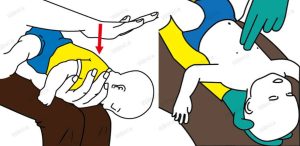
In the case that somebody is choking one must never panic and remain composed; there’s a saying that goes ‘the first step is always the hardest’ that rings true in this situation. A better approach would be gauging the individual who is choking at that moment. If they can cough and/or can speak then ensure that they do cough to remove the obstruction. In the instance where the individual is not able to breathe, cough, or speak and is clearly in discomfort, then abdominal thrusts also known as the Heimlich maneuver need to be initiated. Take a position that is behind the affected individual; place your arms on their waist and make a fist with one hand. While your fist is still above their belly button, you grab their fist with the opposite hand and start pressing inwards and upwards as quickly as possible. Continue doing so until you see that the object w which was causing the choking has been removed or the person being treated loses consciousness. In the case where they do lose consciousness, one must call for help immediately as well as perform CPR if one is trained in it.
What are the signs of a choking episode?
Airway obstruction or choking occurs when a foreign object lodges in the throat or mouth cavity and obstructs the normal breathing mechanism. One can easily notice the common signs which include the inability to utter sounds, breathing, and weak or ineffective cough which occurs persistently. In addition, gripping the neck, which is known as the universal sign of choking, may be accompanied by fear. People may even bite into bluish-colored lips, wheeze, or gag. When the complete obstruction is reached, one can faint due to a lack of blood flow to the brain. It is extremely important to identify these critical signs in children to ensure that relevant help is provided in time.
How can you assist a choking victim?
When trying to help a person who is choking, the first thing you need to see is whether the person can voice or breathe. If they can, one should ask them to keep coughing to remove the lodged object. If they don’t and look anxious, I’d slip behind them and implement the Heimlich maneuver. I would put my arms around the person’s waist, make a fist, and position it just above their belly button. Then I would further thrust my hand into my fist and would then exert rapid jerks upward. This sequence of actions will be done until the obstruction is removed, or the victim loses consciousness. In case of loss of consciousness, I would author a medical emergency report and if I acquire the requisite skills, would attempt to put in chest compressions.
When should you seek professional help during a choking emergency?
When someone is in a choking emergency and can’t speak, breathe, or cough, it is best to call for professional help. If you find out that the victim is choking, call for emergency services immediately; prompt help is critical. If the victim loses knowledge even after your best efforts to help her/him, call for expert assistance as soon as possible, as they will need immediate care. And, in the meantime, continue looking after them and their situation so that you can perform the CPR if required before the paramedics come. If you are in two minds about how bad the choking is, or how to give help, the best thing is to call the emergency number.
References
Choking Respiratory tract ChildFrequently Asked Questions (FAQ)
Q: What are the leading causes of death from choking?
A: The leading causes of death from choking often involve choking on food or foreign bodies in children. Small pieces of food, toys, or other objects can lead to choking incidents, especially among children and elderly individuals, who are the biggest victims of choking deaths.Q: Why are infants and children at a higher risk of choking?
A: Infants and children are at a higher risk of choking due to their small airways and tendency to explore the world by putting objects in their mouths. This can easily lead to choking injuries as foreign bodies may become lodged in their throats.Q: How can choking on food be prevented?
A: Prevention of choking on food can be achieved by cutting food into small, manageable pieces, ensuring children are seated while eating, and supervising them during meals. It is also essential to avoid giving children foods that can easily lead to choking, such as nuts or hard candies.Q: What steps can be taken to prevent the elderly from dying due to choking on food?
A: To prevent elderly people from dying from choking, it is crucial to offer food that is easy to chew and swallow, provide proper seating during meals, and encourage slow eating. Regular dental check-ups can also help, as dental issues can increase the risk of choking.Q: What should be done if someone is choking?
A: If someone is choking, it is important to act quickly. For adults and children over one year old, perform the Heimlich maneuver by standing behind the person, making a fist, and giving quick, inward, and upward thrusts just above the navel. For infants, alternate between back blows and chest thrusts. Always call emergency services if the person cannot breathe or loses consciousness.Q: How does the size of a drinking straw relate to choking risks?
A: The diameter of a drinking straw is often used as a guideline for identifying potential choking hazards for children. Objects that are smaller than this diameter can easily become lodged in a child’s throat and lead to choking.Q: What role does the National Safety Council play in addressing choking hazards?
A: The National Safety Council provides resources and education on the prevention of choking, highlighting the importance of awareness and proper emergency response techniques to reduce deaths caused by choking.Q: Can choking injuries result from non-food items?
A: Yes, choking injuries can result from non-food items. Foreign bodies, such as small toys or household objects, can enter the lungs or become lodged in the throat, leading to choking incidents. It's important to keep potential choking hazards out of reach of children.Q: How serious is the issue of dying from choking worldwide?
A: Dying from choking is a significant concern worldwide, with rates having risen in some areas. It is a leading cause of unintentional injury death, particularly among children and elderly populations. Awareness and education are key to reducing these incidents.


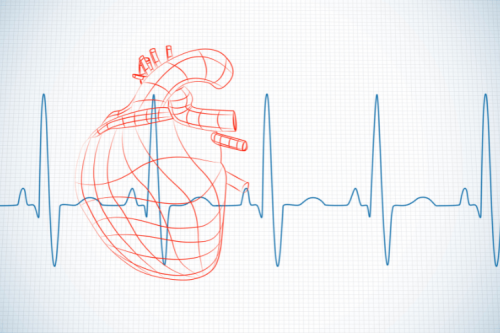


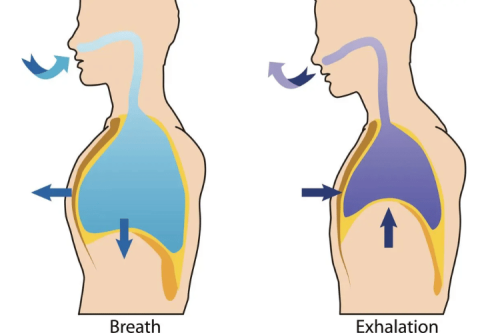
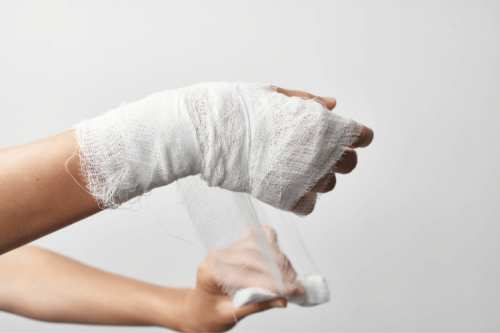
 Login with Google
Login with Google Login with Facebook
Login with Facebook